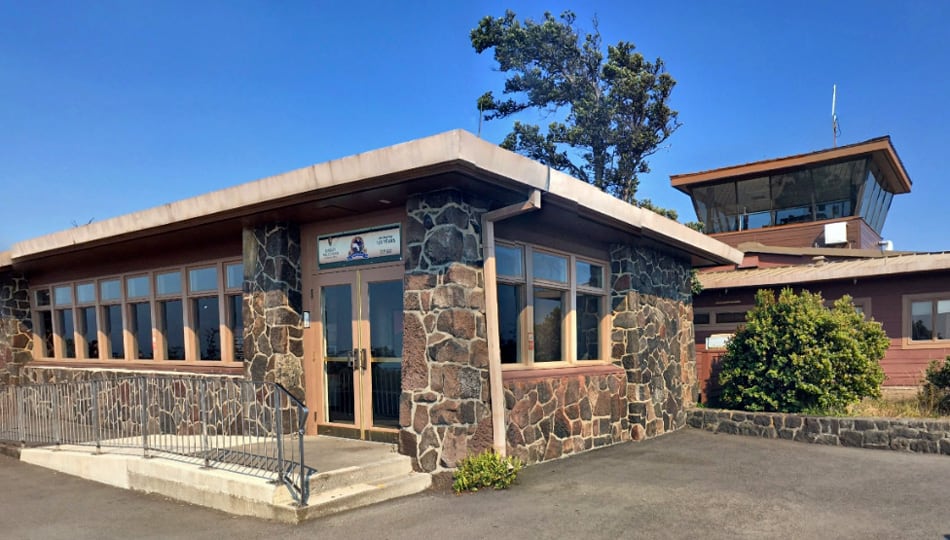Hawaii Zipline & Hiking Tours
Zipline & Hiking Tours featuring adventure with Aloha and a zipline that soars over a 250 foot waterfall.

2025 UPDATE: The Jaggar Museum and several other buildings located on Uēkahuna bluff were severely damaged during the 2018 Kilauea Eruption. The museum was permanently closed after the eruption and the building was torn down in 2024 as part of the park’s Disaster Recovery Project. Check the park website for all current closures.
Uēkahuna bluff and Halema’uma’u Crater
Fortunately the Disaster Recovery Project included repairs to the Uēkahuna bluff overlook and comfort station and this area reopened to the public in spring 2025. From the Uēkahuna bluff, there is an incredible view of the caldera and the main crater Halema’uma’u. The scenic overlook offers unobstructed views of the Kilauea crater and caldera, which is one of the world’s most active volcanoes.
Along the rim of the Kilauea Caldera was one of the largest volcanic observation sites in the world. From this incredible perch, the Hawaiian Volcano Observatory spent over a century studying the active Hawaiian volcanoes of Kilauea and Mauna Loa and monitoring active volcanoes throughout the Hawaiian Islands. The Thomas A. Jaggar Museum was the hub of this impressive scientific complex.

For those interested in the unique and exciting nature of Hawaiian volcanoes, the Thomas A. Jaggar Museum was a great educational site. Built in 1927 by the Hawaii Volcano Research Association, the first building on the site was referred to as the “Uwekahuna Museum,” and was later renamed for the famed geologist Thomas A. Jaggar that helped establish the observatory at Kilauea. The museum was located along Crater Rim Drive and was a must-visit for guests to Hawaii Volcanoes National Park for many years.
The Thomas A. Jaggar Museum contained exhibits that explored the history of the site, the volcanic activity throughout the islands, and how volcanologists are continuing to study active lava flows to better predict eruptions and protect people and property from destructive forces. The exhibits displayed volcanic observation equipment used in the past as well as the present, a working seismograph, and plenty of examples of clothing and gear used by scientists to get close to lava flows. Many of these items will be integrated into the main Kilauea visitor center, which is slated to be expanded as part of the Disaster Recovery Project.
While no longer open to the public, the Thomas A. Jaggar Museum is a big part of the Hawaii Volcanoes National Park history and was a wonderful educational experience for those interested in Big Island volcanic activity and the research being done to better understand our relationship with the planet and its geological activity. The Big Island lost a valuable resource with the destruction of this historic museum.
The two-story Okamura Building adjacent to Jaggar Musuem was also damaged beyond repair in the 2018 eruption. It was built by the U.S. Geological Survey (USGS) in the 1980s and housed offices and laboratory spaces for the Hawaiian Volcano Observatory (HVO).
Zipline & Hiking Tours featuring adventure with Aloha and a zipline that soars over a 250 foot waterfall.
World-renowned for the quality and consistency of its beans, Kona Coffee alone is worth a trip to the Big Island.
With knowledgeable guides and access to some of the Big Island’s most prized lands, Hawaii Forest and Trail brings you closer to the true beauty of the island.